Shownotes
The Mitochondria are often referred to as the energy powerhouses of the cell. Healthy, abundant and well functioning mitochondria are important for health and abundant production of Adenosine Triphosphate (ATP), the energy currency of the cell. In this episode Anna explains the factors that influence mitochondria health and function and the dietary and lifestyle practises that can support better energy production.
Useful links:
Website: https://annamarsh.co.uk/
Instagram: https://www.instagram.com/anna_marsh_nutrition/
Fatigue Recovery Quiz: https://app.annamarsh.co.uk/quiz
How To Support The Mitochondria
Hello, and welcome another episode of the chronic fatigue and burnout recovery podcast. I am your host Anna Marsh, and today we’re going to be talking about all things mitochondria. Before we dive into that, I’ll pre-frame this episode by saying, if you’ve listened to some of the other episodes in the past, I talk about fatigue or low energy as something impacting the body’s ability to make ATP, the body’s energy currency.
And of course, there are multiple mechanisms or combinations of mechanisms, which can result in poor ATP or low energy production. One of those mechanisms is poor mitochondrial health or some metabolic roadblock in the body’s process of making energy via the mitochondria. So we do want healthy and well-functioning mitochondria for energy production.
What you’ll probably start to realise, as I talk a little bit more about mitochondria today, is that a lot of the practices that we would use to support the mitochondria or the health of the mitochondria are also practices that we would use when considering other aspects of energy and biochemistry, some of which I’ve already talked about in previous episodes, like blood sugar, or oxygenation or digestive health. This is where we want to see the body, not in a reductionist approach, so reducing systems down to isolated processes, but rather seeing the body as a network of interlinking symptoms. That’s why when we work on one aspect of our health, it can start to improve other aspects that we didn’t think we were directly targeting, that it can have that knock-on benefit.
When we are talking about the mitochondria today, there may be a little overlap in terms of some of the other things I’ve discussed in previous episodes. That means I might not go into those specific details because you can go back and listen to a podcast on blood sugar; for example, I might make small references to what you can do in this episode. So as we dive in, I guess the first thing to cover is what the mitochondria are.
I appreciate that I’ve thrown this word around a few times, and we’re only a few minutes into the podcast episode, but it might be helpful to understand what it is. Our human bodies are made up of cells, and all cells have mitochondria within the cell. The mitochondria are often referred to as the cells, energy-producing powerhouses or energy-producing factories because it is through a series of biochemical transactions or biochemical processes that happen within the mitochondria that the body produces a well should I say, can produce ATP.
We can make a little bit of energy not using the mitochondria, which I’ll talk about in a moment about how that happens. Still, we make most of our energy using the processes inside the mitochondria and the mitochondrial membrane. This means that if we want to make more energy or be effective at making energy, we want to have mitochondria.

We want to have lots of them. We want them to be dense within the cell, and we want them to have everything that they need to function optimally. That’s what this episode is all about. But before we talk about mitochondria specifically, let’s talk a little bit about the steps that come before because this is where you’ll start to see that there is an overlap between mitochondrial health and some of the other things that I’ve already talked about on this podcast. If we’re thinking about energy production in the form of ATP, a whole series of steps must occur before we can produce energy.
The first step is we need food. We make energy from proteins, fats, and carbohydrates in the diet. Without carbohydrates, we can also make ketones, which can be used for energy, which relies on eating. We need to eat enough calories to eat food and fuel our bodies appropriately.
That food needs to become digested, which I talked about in the gut health episode; we need to be able to adequately chew and break down and digest our food and absorb it. So absorption is an active process, meaning we need healthy gut membranes to absorb the food. Then once we’ve absorbed the food, it needs to be transported, and we also need to be able to transport oxygen because the mitochondria use the fuel from our food in the presence of oxygen to make energy.
So we need to be able to transport food into the cells, which requires healthy functioning insulin. We also need to be able to transport oxygen into the cells, which requires healthy red blood cells, and I talked about this in the oxygenation episode. There are certain nutrients which are important for that to happen.
So then we get to the cell, and if we use glucose as an example, we will transport glucose via insulin into the cell and start burning that glucose. This doesn’t happen in the mitochondria. This happens in the cytosol of the cell.
Your proteins, fats, and carbohydrates are broken down into a molecule called Acetyl-CoA, and then we can use Acetyl-CoA in the mitochondria to begin the processes which help us make ATP. We make a very small amount of energy in the cell’s cytosol when we’re undergoing, or these nutrients undergo, the process of glycolysis. So sugar burning, we can do that without oxygen, and we can do that very quickly.
What it means is when we need energy instantly, like we might need it instantly, if we were responding to a big threat or big stress, and we had to run away or fight and fight or flee. When the nervous system is very activated, the body will tend towards glycolysis because it’s quick, fast, and easily available, we don’t have to rely on oxygen, but the yield is low. We can only produce two molecules of ATP in the cell’s cytosol.
But then, if we have the time, we can start burning fats in the mitochondria in the presence of oxygen, which can further yield another 36 ATP. The only challenge is that it takes a little bit longer. So it’s not an instantaneous energy source; it takes a little bit longer, but the yield is very high.
We need oxygen and various other nutrients for the mitochondrial to function properly. Now understand all of this, you can probably begin to understand a little bit more about the factors that can influence energy production through the mitochondria. If you’ve listened to previous episodes, for example, the cell danger response episode.
One of the things you may have heard me talk about in that episode is that the mitochondria are not only energy-producing organelles but also our defence organelles. They are sensory organelles that scan the body and respond to threats. The first thing we need to know then you can always go back and listen to the cell danger response episode.
If you want all the details on this is that when the body is under threat, that could be if there’s a toxic overload. For example, it could be that there is emotional and mental stress, or the nervous system is in a state of fight or flight. Or it could be something like a viral infection, bacterial infection, yeast infection, or mould infection.
When the body is experiencing a state of threat and understands that it needs to put in its defences and operate from a place of defence, no changes are naturally created in the mitochondria to shut down energy production. Therefore, the first thing we want to consider when considering how we support the mitochondria is we need to ask if the body is currently in a state of threat.
Because if the body is being threatened, the first thing to do is to help the body reach a place of relative safety. That means you don’t necessarily have to be 100% safe, grounded, calm, and chilled out. Still, the body needs to feel safe enough for the mitochondria to lower defences and begin functioning more optimally.
That’s the first thing we want to do is consider the cell danger response, consider if there’s an active threat, and then do what we need to do to support the body to find a relative sense of safety so that we can ease up on these changes in the mitochondria and then the mitochondria processes can happen more smoothly, in favour of producing energy for the brain and the muscles and for the organs to function as they should. For this episode, let’s assume that there’s no threat, no danger because that’s covered in previous episodes. Let’s look at what we need to know and how we support the body’s healthy mitochondrial function.
I believe we can start with this if it’s just starting from the ground building healthy foundations through our diet and lifestyle practices. Every time we eat a meal, we have the opportunity to eat in a way that’s going to offer the mitochondria nourishing foods, which is going to offer the mitochondria nutrients that it might need, and which is going to send signals perhaps of inflammation so that could be inflammation signals may be threatening, or anti-inflammatory signals. Signals send safety messages to the mitochondria, which will all, over time, collectively influence the health of the mitochondria.
Let’s consider, for example, that the mitochondria are part of the cell. You know healthy cells will work well; healthy cells with healthy cell membranes and mitochondria will work effectively. How do we build cells?
We build cells from the nutrients we’re receiving in our diets. Specifically, if we consider cell membranes, cell membranes are made up of fat. The balance of fat in our diets can then have a positive or negative impact on cell membranes, which affects the health of the cell, and then they can also impact the health of the mitochondria.

Here, we want to consider a diet with good amounts of healthy fat. So thinking here about things like oily fish, avocado, olive oil, olives, and coconut products, the MCT is the medium chain triglycerides, and coconut products can benefit the mitochondria. So we want a diet which has lots of good fat.
Typically where this can go wrong is people who are dieting excessively and cutting fat out of their diet, so their overall fat intake is quite low, or if there are digestive issues, a lot of my clients on their stool tests, they’re not digesting and absorbing fat very well, so that needs supporting and this is where we circled to gut health and liver and gallbladder health as well. Or maybe someone is eating fats in their diet, they’re not dieting, but the choice of fats is poor. There’s a lot of processed fats in, you know, the takeaway is processed foods, ready meals, it’s okay to have a little bit of saturated fat, for example, from grass-fed meat.
It’s okay to have cholesterol that you naturally get in eggs, which can benefit the body. But when there’s a lot of packaged or processed food, poor quality cuts of meat, processed meats, like sausages or burgers or things which may have no extra sort of fats or lipids added to them, that’s not necessarily going to be conducive to creating an anti-inflammatory environment in the body, or in nice healthy cell membranes which are flexible and able to do the job of your transporting the nutrients that we want into the cell but also releasing the waste products that we produce as well just through our natural metabolic processes. So good quality fats in the diet are a must.
We also know that plant-based foods are very beneficial. The main ones I’ll drop here will be things like berries, cherries, and your polyphenols, so deep, red or deep purple foods tend to be very beneficial for the mitochondria. Still, things like broccoli, green tea, seaweed, and almonds can also have therapeutic benefits.
There are so many different plant-based foods that have a variety of benefits for health. Of course, it will be great to see people having a couple of cups of green tea or get a day, some blueberries, maybe having some broccoli with the meals, some oily fish, those types of foods. Still, just having a good variety of plants in the diet, having an abundance of plants with your meals, so aiming to fill, for example, half a plate of your meal each evening or each breakfast, lunch and dinner with plant-based foods, that’s a really good goal to have in terms of plants.
I am not overanalysing here, and going well. Should I choose broccoli or asparagus because it will be based on mitochondria? I encourage people not to overthink but aim for colour, variety, and trust; every food will give them some nutritional benefit.
So we’ve talked about plants and fats, and we want good quality protein. Protein is such an important nutrient. We don’t only need it for energy, but we need it for muscle building for our lean body mass.
If you have more lean body mass, you have more mitochondria. We want to ensure that we get enough protein in our diet. I ask clients to aim for about 1.5 grams per kilo of body weight. Sometimes we may go much lower in the short term for various reasons if they’re on a ketogenic diet or the protein digestion isn’t great. We’re just trying to take that off while we work on some digestive health, but I think 1.5 grams per kilo body weight may be a little bit more if you want to lose weight.
If you’re struggling with blood sugar control, doing a lot of exercises can be beneficial. But I feel like 1.5 grams per kilo body weight is achievable. Then make sure that’s incoming from things like your oily fish eggs, which I mentioned grass-fed meat, you get some protein from nuts and seeds, and you can also have legumes.
So a variety of different proteins. If someone is vegan, that’s fine; they’ve just got to make sure they’re getting enough protein from the vegan foods they are eating and be prepared to work quite hard at it. You can use protein powders and things to supplement your diet, but they are a supplement.
They shouldn’t be the sort of front and centre of your diet, just having protein shakes or powders to get your protein intake in. You want to focus on real foods as much as possible, especially if blood sugar is an issue. That brings me to the next point: we want healthy blood sugar.
When the body is burning sugar as fuel, you may have heard the saying that if you don’t use it, you lose it. The same goes for how we use these different metabolic pathways: sugar burning versus fat burning. If we eat a diet, which is very high in carbohydrates, and we’re having quite high carb meals or dominant carbohydrate meals, there’s a lot of frequent eating going on.
There are no big gaps between meals, but someone’s eating every two or three hours, snacking a lot, and is dependent on carbohydrates. They find it quite hard to go without a meal. Some of the things we may be talking about in the blood sugar episode, then what the body is learning from that behaviour, is always sugar available. I can rely on my glycolytic system.
It’s cheap, and it’s easy to run. Yeah, it doesn’t produce that much energy, but there’s always substrate available for this. So when we eat a high carbohydrate diet, or we eat in a way that doesn’t support healthy blood sugar control, the body learns to use glycolysis to make energy and the mitochondrial pathways weaken and remember that those mitochondrial pathways, although they maybe take a little bit more work, they have a good energy yield.
They’re producing so much more energy in the glycolytic pathways. One of the ways we can train the body to use those mitochondrial pathways, and if you think of strengthening a muscle in a gym, you go in, and you have to train it, which means you have to use it or you lose it. The same goes for these mitochondrial pathways; we must use them or lose them.
For us to use them, we have to make sure that blood sugar is balanced throughout the day, and you can refer back to the blood sugar episode for more detail on that. Also, we can potentially consider practices like fasting. And fasting isn’t something I’ve talked about in much detail yet.
I might do just a separate episode on fasting because I do get a lot of questions about how to approach it, and just genuinely very quickly is on say if you aren’t going to use practices like fasting, you want to kind of ramp yourself up towards it build up towards it, instead of just diving straight in, but that might look like reducing how often you eat in a day so if you’re someone who’s a snacker, starting to train your body to have three meals a day, and no snacks, and then you can look at reducing the window in which you eat your food. If you normally eat breakfast at 8 am and dinner at 8 pm, you’ve got a 12-hour window overnight. Still, you’re not eating; what if you could push breakfast out a little bit later or bring your evening meal in earlier, then maybe have a 14-hour window?
In doing so, you can play around with that and maybe do a day where you don’t have any meals, so you have one meal at the very end of the day, so you’ve done a 24-hour fast. Maybe that’s not something that you do daily, some people do, but for the most part, it’s not practical for many people or enjoyable, especially if you like your food. But that’s a way that we can bring more flexibility to our metabolic system because we’re not putting loads of carbohydrates into the system and are constantly feeding the glycolytic system.
That mitochondrial fat-burning energy system has an opportunity to go, “Oh yeah, we need to do some work here.” And in doing so, keeps it strong and healthy. That’s kind of where we can begin with food and ultimately, just really focusing on single ingredient foods, unprocessed foods, foods in their natural state, and making sure that we’ve got good amounts of those colourful fruits and veg, we’ve got good amounts of high-quality protein and high-quality fats.
Then carbohydrate consumption is tailored towards blood sugar control, which will differ for each person. We all have different carbohydrate tolerances. Mine is rubbish, and I can only eat very few carbohydrates daily.
If I eat something, that’s probably what a normal person would consider being like a standard portion of brown rice, thinking that that’s healthy, which could potentially send my blood sugar very high. So it’s worthwhile thinking about your unique blood sugar tolerance and how you stay within the limits of that tolerance because that will be important for your mitochondria’s health. If you want to dive deeper into that, there’s the blood sugar episode.

I also have the blood sugar mini-course on my website. Now that we’ve covered the food bits and bobs, the next thing to consider is just nutrients. This is where I could teach you all the biochemical pathways but don’t worry, and I will not do that.
But I’m just going to highlight a few nutrients that could be important. I’ll start with oxygenation. You can always go back and listen to the oxygenation episode, where I talk about the important nutrients for red blood cell health.
But remember that the mitochondria operate in the presence of oxygen. We need adequate oxygenation of the body for healthy mitochondrial function, and part of that will be the transport of oxygen via the red blood cells, which rely on vitamin B6, vitamin B12, folate and iron. We want to ensure that we are digesting, absorbing and assimilating those nutrients appropriately because that will contribute to mitochondrial function.
Then once we get into the cell, we have certain nutrients, L carnitine and magnesium. The next thing we want to consider is we’ve got fats, we’ve got carbohydrates, and we’ve got proteins, which are broken down into various acids, like suberic acid and diprotic acid, and pyruvic acid; you don’t need to worry about the names. They are then shuttled into the mitochondria, where they then form Acetyl-CoA.
Specific nutrients are important to get these acids into the mitochondria. These nutrients or the nutrients involved are carnitine and magnesium. So magnesium is an important nutrient involved in over 300 reactions.
It can often be low in people with fatigue. So it’s always a can be, should I say, not always. It can be a quick win. For some people, when they start taking magnesium, it can help with their energy. Carnitine may also benefit from some carnitine, especially if you’re vegan or vegetarian and don’t eat much red meat.
Once we’ve got Acetyl-CoA formed in the mitochondria, we go through what is known as the citric acid cycle. So the citric acid cycle is a biochemical process that helps to produce NADH and FADH. These are then transported to the mitochondrial membrane, and it’s by-transporting electrons along the mitochondrial membrane that the body cannot make ATP.
I appreciate a very quick biochemistry lesson, but you want to know that for us to produce this NADH and FADH-2, we need to go through a series of biochemical steps. These biochemical steps require nutrients or vitamins and minerals as cofactors. In other words, if we want these steps to operate well to operate effectively, and therefore energy production to operate well and operate effectively, we need to have adequate levels of these nutrients, which means we need to be able to digest, absorb and assimilate them from our food.
These nutrients include things like iron, such as vitamin B3, magnesium, manganese, vitamin B1, and vitamin B2, so without adequate levels of these nutrients, these processes don’t happen as effectively. If they’re not happening as effectively, we don’t necessarily make energy as effectively as we’d like to. Then when we get to the mitochondrial membrane, CO Q 10, Coenzyme Q 10, is, again, another really important nutrient that’s important to help shuttle electrons along the mitochondrial membrane, which is how we make energy.
Not all of my clients, but my clients benefit from taking the vitamin supplements or want to make sure that iron levels are good, magnesium levels are good, and maybe it can be beneficial to take some CO Q 10. Do you have clients who respond well to it and some who don’t respond just because it’s not their main issue? It’s not what they need.
Typically, if we’re considering testing, how do we know what someone needs or doesn’t need? This is where I like the neutrophil, which will give us an idea of how these different biochemical processes work. But it can also give us an idea of your CO Q 10 levels.
Like, what are your magnesium levels like? What are your manganese levels like? So we can also see if there are low levels of these nutrients contributing to the function of these processes in the mitochondria.
Finally, worth mentioning here is that in addition to needing nutrients to help these pathways work well, heavy metals can inhibit these pathways, so if someone has high mercury or fluoride or arsenic or aluminium exposure, for whatever reason, that could be something that’s inhibiting the health of these cycles. We know that toxins like heavy metals are already activating the cell danger response. Still, they can also affect the body by putting it into this threat mode and inhibiting these energy pathways in the body.
Again, the neutrophil, one of the tests I like, can measure blood and heavy metals. Heavy Metal testing is a bit controversial, but if something’s coming up high in one of these tests, we want to consider how it impacts these energy pathways. Consider the client’s health history where possible exposures could be and safely support detoxification because heavy metals can be tricky to work with.
That’s just an understanding of the nutrients that are involved. The other thing that’s also really important for healthy mitochondria is managing oxidative stress. Oxidative stress is the balance of oxidative species produced, which can be produced naturally due to metabolism happening in the body.
But they can also be produced when the cell feels threatened and in danger, which can be self-protective in the short term. Assuming the cell is okay, we’ve already set it for this episode. It’s not in danger. Therefore, we want to ensure that the oxidative stress of the cell is well managed.
The cells have three antioxidant enzymes, which are important for managing oxidative stress. These are catalase, glutathione, and superoxide dismutase. These are enzymes. So they’re made from proteins, which is why we need to have good protein and amino acid consumption, which means we must also be able to digest and absorb proteins. But in addition to this, we might also need the nutrients which support these enzymes.
So adequate levels of iron, copper, zinc, selenium, and manganese will all be important for these oxidative or show the antioxidant enzymes that manage the cell’s oxidative balance. We’ve talked about the importance of food, and we’ve talked about the importance of cell membrane health and getting good fats in your diet. We’ve talked about the importance of oxygenation.
We’ve talked about managing blood sugar, we’ve talked about specific nutrients that can be involved, and we’ve touched on digestion. I’ve said that digestion is important because we need to digest, absorb and assimilate the nutrients from our food that will be part of these mitochondrial biochemical processes. But we also need good digestive health because if digestive health is imbalanced, for whatever reason, that can be something that can then have an impact on mitochondrial function.
After all, it’s potentially threatening to the cell. There are certain toxic gases, for example, hydrogen sulfide gas, which can be produced if someone has an excess of sulfur-producing bacteria in the gut, which can directly be toxic to the mitochondria and impact their function. Digestive health is another essential part of the process.
Again, I did a whole episode on digestive health, so if you want to touch on that, you can listen back to that episode. The final couple of things I just wanted to mention here are the hormetic stressors. So hormetic stressors are stressors, which in the right dose can be beneficial to the body and obviously in an excessive dose, or if there’s not enough of a dose, then it can either obviously be ineffective if it’s too small a dose or if there’s an excessive dose, that can create a lot of damage and threat to the body into the cell and impact energy production.
These hormetic stressors include fasting, which I’ve already touched on. Fasting is great for blood sugar control, but it can also be good for autophagy which is the cell’s natural waste clearing process. It’s helping the body or helping the cells to clean up the debris and eliminate waste.
It’s facilitating natural detoxification on a cellular level. For blood sugar control, detoxification, and in the right dosage, fasting can encourage the increase of size and number of mitochondria exercises. Another classic one already mentioned if you have more muscle mass, you have more mitochondria.
Still, exercise can stimulate mitochondrial biogenesis, the process by which the body makes mitochondria. Also, it’s, especially if we’re doing exercise at a lower intensity, encouraging the workings of these mitochondria machinery, which will be beneficial. Exercise is always tricky for people with fatigue because, depending on their capacity, they may not be able to exercise at all or as much as they would like.

This must be considered in the context of what’s going on for you. Maybe exercise is something that you build up towards, but as soon as someone can exercise, encourage them to do as much movement as much exercise as they physically can within their capacity because it’s going to be great for blood sugar control, great for blood flow, and great for building up one’s mitochondrial foundations. Then the other thing that we can do is our heat stress. For example, if you tolerate using a sauna, 10 minutes three times a week can be good for the mitochondria.
Hot yoga, again, if you can tolerate another good one for the mitochondria and cold exposure. Cold exposure is great for the mitochondria. I do believe doing something like 11 minutes per week is sort of the sweet spot for a lot of people. Again, I’ll do a whole episode on these hormetic stressors where we can dive into them in more detail.
But 11 minutes a week is like three to four cold showers. Or if you’ve got access to the ocean as I do, you can always do cold water depths. Be mindful of being safe with a friend because cold water shock can be anything.
Those are the hormetic stresses; another thing also to consider is a ketogenic diet. A ketogenic diet can mimic fasting. So even if you’re not eating, or if you are eating, but you’re eating foods which are very, very low carbohydrates, that could be a stepping stone towards fasting.
Then the final thing here to consider would be thyroid function. Thyroid hormones or adequate amounts of thyroid hormones do have a positive impact on mitochondrial biogenesis. This means we want to do some basic thyroid screening, just check the thyroid hormones are where we want them to be, and if they’re not, then we need to start looking for why they might be low.
I’m sure there is so much more about mitochondria, but this is probably a great understanding of where to start. I’ll finish with a little bit of a wrap-up, and the first thing we want to consider is just the basics of a healthy diet. So whole foods, proteins, a good balance of fats in your diet, colourful plants, and optimised blood sugar.
Once you’ve got those foundations of blood sugar stability, there’s an opportunity to play around with some fasting, and then maybe layering on things like exercise stress, heat stress, cold stress, as appropriate for you. We want to ensure that we include some therapeutic foods. I had mentioned things like oily fish, berries, cherries, almonds, broccoli, green tea, and seaweed, in any kind of polyphenols would be great.
But again, just colour and variety, I think, keep it simple. We want to think about good digestive health. If there are any kind of obvious gut niggles, there are things we want to address. Testing can be helpful sometimes to reveal if there are any specific nutrients we’re lacking, which can be beneficial because there are so many different pathways in the functioning of the mitochondria to produce energy. It’s really difficult to guess, so this is where testing can help us understand which nutrients you might need specifically, and then we can top up with extra nutrients there.
But keeping things simple, just a really good B complex, maybe a multi-mineral, checking our levels, and playing around with a bit of CO Q 10 could all be beneficial. Then we want to ensure that we’re oxygenating well and managing inflammation through our diets and lifestyle practices. The final one here is just sleeping, ensuring that we’re optimising our sleep or getting sunlight in the morning.
We’re watching out for bright lights and blue light at night. We’re doing all the things we need for sleep hygiene to sleep well. That is probably a good place to wrap up things you can do to support your mitochondria.
Hopefully, that’s given you some big rocks to work on some big chunks and pieces of the puzzle. If you would like more help and support with your fatigue recovery journey, you’re more than welcome to reach out and discuss your options for working with me. If you’ve enjoyed the podcast today, please leave a review.
Maybe share it on your social media, tag me, and let me know what your big takeaways were. Sharing this information helps others who also need to find it so you can share the love—wishing you a wonderful fatigue recovery day. I will see you in the next episode.











 Healing l
Healing l
